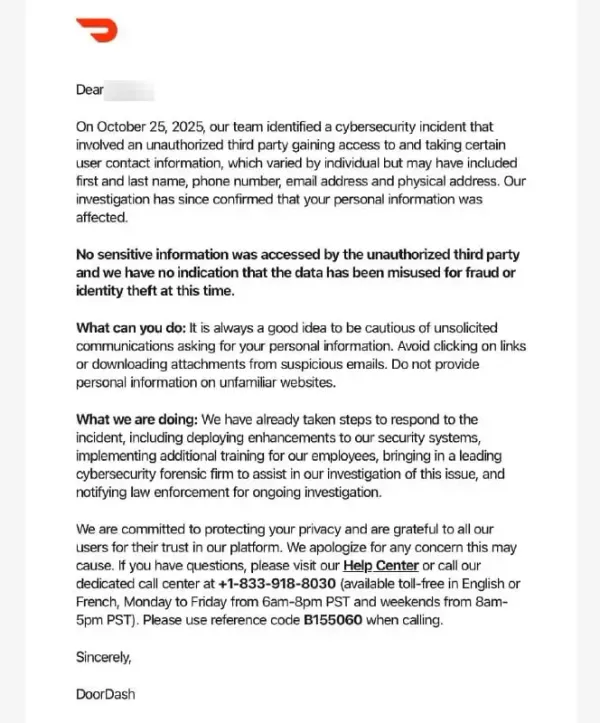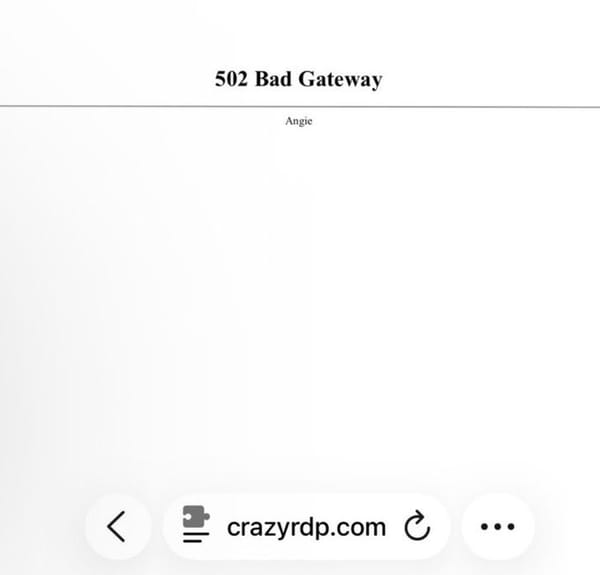Briefing on the 2025 Cybersecurity Landscape: Key Threats, Trends, and Incidents

Executive Summary
The year 2025 is defined by a cybersecurity landscape of unprecedented velocity, complexity, and convergence. The volume and sophistication of cyber threats have escalated dramatically, with Q1 2025 data revealing a 47% year-over-year increase in weekly cyber attacks per organization and a 126% surge in ransomware incidents. This intensification is driven by a confluence of factors: the weaponization of Artificial Intelligence, persistent vulnerabilities across digital supply chains and the Internet of Things (IoT), and escalating geopolitical tensions fueling aggressive state-sponsored operations.
The threat actor ecosystem is in a state of dynamic flux. Following major law enforcement disruptions, the ransomware-as-a-service (RaaS) market has fragmented, with new groups like RansomHub, Play, and Akira ascending to prominence. Concurrently, the lines between nation-state espionage and financially motivated cybercrime are blurring, exemplified by the emergence of hybrid threats like the Warlock ransomware, operated by the China-based actor Storm-2603, which targets critical infrastructure using zero-day vulnerabilities and novel data auction tactics. Major campaigns in 2025, such as the widespread compromise of Salesforce instances by the ShinyHunters group and the crippling ransomware attack on Collins Aerospace's aviation software, underscore the critical risk posed by supply chain vulnerabilities.
In response, the global regulatory environment is rapidly maturing. Landmark regulations, including the EU's NIS2 Directive and Digital Operational Resilience Act (DORA), are coming into full effect, imposing stringent new requirements for cybersecurity, incident reporting, and supply chain risk management. In the U.S., the SEC's mandatory 4-day disclosure rule for material incidents, CISA's upcoming 72-hour reporting rule under CIRCIA, and significant proposed updates to the HIPAA Security Rule are forcing organizations to prioritize transparency and accountability.
This confluence of escalating threats and stricter compliance mandates creates a clear strategic imperative for all organizations: a fundamental shift from reactive, perimeter-based security to proactive, integrated, and resilient defense strategies. The adoption of Zero Trust architecture, the development of robust AI governance, enhanced supply chain diligence, and a steadfast commitment to foundational cybersecurity hygiene are no longer best practices but essential conditions for survival and success in the 2025 threat environment.
The Evolving Threat Landscape in 2025
1.1. Escalation of Attack Volume and Severity
Data from the first quarter of 2025 established a concerning baseline, indicating a high-velocity global threat landscape.
- Global Attack Volume: The average number of weekly cyber attacks per organization surged by 47% compared to Q1 2024, reaching 1,925 attacks.
- Regional Disparities: The growth was not uniform, with Latin America experiencing a 108% year-over-year increase, followed by Europe (+57%), North America (+40%), Africa (+39%), and the Asia-Pacific region (+38%).
- Targeted Sectors: The most heavily targeted industries for all attack types were Education (4,484 weekly attacks), Government (2,678 weekly attacks), and Telecommunications (2,664 weekly attacks).
The total economic cost of damages related to cyber warfare alone is estimated to reach $13.1 billion in 2025, a 21% increase from the previous year.
1.2. The Ransomware Ecosystem: Fragmentation and Adaptation
Ransomware remains a primary driver of cyber losses, with Q1 2025 being a record-breaking period for attack volume.
- Unprecedented Growth: Reported ransomware incidents increased by 126% compared to Q1 2024.
- Market Fragmentation: Following law enforcement disruptions of major groups like LockBit and ALPHV/BlackCat in late 2024 and early 2025, the ecosystem has become more fragmented, with 70-80 active groups identified. This proliferation makes the threat environment more complex and less predictable.
- Dominant and Emerging Actors: Analysis of the post-disruption landscape reveals a new cohort of leading threat actors.
Rank | Group | Key Characteristics |
1 | RansomHub | Emerged as the new leader, filling the void left by LockBit. Attracted experienced affiliates with high commission splits (up to 90%). |
2 | Play | Known for quiet consistency and operational execution rather than media theatrics. |
3 | Akira | A veteran group that significantly ramped up its operational tempo and victim count in 2024 and 2025. |
4 | Qilin | Notable for high-impact attacks on critical sectors like healthcare (e.g., Synnovis) and public services. |
5 | Medusa | A long-time presence that became more aggressive in late 2024, targeting high-profile victims. |
- Evolving Tactics: The "double extortion" method—encrypting data and threatening to leak stolen files—is now standard, occurring in 95% of incidents. To coerce payment, groups are employing more aggressive pressure tactics and innovating monetization strategies, such as the Warlock group's private auction of entire stolen datasets.
1.3. State-Sponsored Operations and Geopolitical Drivers
Geopolitical instability is a significant factor in the threat landscape, directly influencing the cybersecurity strategies of nearly 60% of organizations.
- Prevalence: State-sponsored campaigns accounted for a record 39% of all major cyber attacks in 2025, impacting 76 countries.
- Key State Actors: The United States, China, and Russia collectively accounted for 61% of all observed cyber warfare activity. China is identified as the most active and persistent cyber threat to U.S. government, private sector, and critical infrastructure networks.
- Primary Objectives: Operations are focused on espionage (intellectual property theft, intelligence gathering) and the disruption of critical infrastructure. Attacks on energy, water, and transport sectors rose by 34% in 2025.
- Hybrid Threat Models: A concerning trend is the blurring line between state-sponsored and financially motivated crime. The Warlock ransomware campaign, attributed to the China-based group Storm-2603, exemplifies this hybrid model, where nation-state capabilities are deployed for what appears to be financial gain.
1.4. Key Attack Vectors and Techniques
Threat actors are refining their methods to maximize impact and evade detection.
- Supply Chain & Third-Party Compromise: This vector was responsible for many of the year's most significant incidents. Attackers exploit trust relationships by targeting software vendors, managed service providers (MSPs), and cloud platforms. High-profile examples from 2025 include:
- Collins Aerospace: A ransomware attack on its vMUSE aviation software disrupted multiple European airports.
- Salesforce Platform: A widespread campaign by the ShinyHunters group compromised numerous Salesforce customers through social engineering, impacting companies like Air France-KLM, Cisco, and Allianz Life.
- Snowflake Platform: A breach affecting the cloud database was linked to the massive Ticketmaster data theft.
- Other Vendors: Breaches at third-party providers led to data exposure for companies like TransUnion, Harrods, and M&S.
- Living-off-the-Land (LotL): A striking 79% of all threat detections were malware-free, indicating a major shift towards using legitimate, built-in system tools (e.g., PowerShell, WMI, RDP) to conduct attacks. This technique allows adversaries to blend in with normal network activity and bypass traditional signature-based security.
- Exploitation of Vulnerabilities: Actors continue to successfully exploit both publicly known and zero-day vulnerabilities. In 2025, China-linked APT groups exploited flaws in Cisco, Palo Alto Networks, and Ivanti devices, while the Warlock group rapidly weaponized a critical zero-day chain in Microsoft SharePoint dubbed "ToolShell." In September, the New York Department of Financial Services issued an alert for zero-days in Cisco ASA and Firepower appliances.
- Social Engineering and Credential Theft: Phishing and social engineering remain the most dangerous threat vector, responsible for 47.5% of attacks. Voice phishing (vishing) campaigns have proven highly effective, leading to breaches at companies like Cisco.
The Transformative Role of Artificial Intelligence
AI is rapidly becoming a defining element of the cyber conflict, serving as both a powerful weapon and an essential defense mechanism.
2.1. Offensive AI: A Threat Multiplier
Adversaries are leveraging AI to increase the scale, speed, and sophistication of their attacks.
- Enhanced Social Engineering: Generative AI is used to create hyper-personalized phishing emails, smishing texts, and vishing scripts at scale. AI-powered deepfake technology enables highly convincing impersonations for CEO fraud, as evidenced by a case where a finance employee was tricked into transferring $25 million after a deepfake video conference call.
- Automated Reconnaissance and Exploitation: AI can automate network scanning, rapidly identify vulnerabilities (including zero-days), and map attack paths far more efficiently than human operators.
- Adaptive Malware: AI is being used to generate polymorphic malware that constantly alters its code to evade detection. AI-driven attacks represented 22% of all state-level cyber incidents in 2025.
2.2. Defensive AI Integration
Defenders are increasingly integrating AI to counter advanced threats.
- Advanced Threat Detection: AI and Machine Learning are crucial for analyzing massive data volumes to detect subtle anomalies indicative of stealthy attacks like LotL intrusions or zero-day exploits.
- Automated Incident Response: AI-powered Security Orchestration, Automation, and Response (SOAR) platforms can automate critical response actions—such as isolating compromised endpoints—at machine speed, dramatically reducing response times.
- Enhanced Analytics: AI helps security teams correlate alerts across disparate tools (EDR, network, cloud) to identify complex attack chains and reduce alert fatigue.
2.3. AI Governance and Security Challenges
The rapid adoption of AI has outpaced the implementation of necessary security and governance, creating significant new risks.
- "Shadow AI": Only 37% of organizations have a security assessment process for AI tools before deployment, leading to the use of unsecured AI systems that introduce hidden vulnerabilities.
- AI-Specific Vulnerabilities: Organizations must now defend against new threats targeting AI systems themselves, including data poisoning, model evasion, prompt injection, and algorithmic bias.
- Fragmented Regulation: A complex patchwork of regulations is emerging globally, led by the EU's comprehensive AI Act, creating significant compliance challenges.
Major Incidents and Case Studies of 2025
Several large-scale incidents in 2025 highlight the convergence of key threats and their potential for systemic disruption.
Incident | Date | Victim(s) | Threat Actor / Method | Key Impact and Significance |
Collins Aerospace Attack | Sep 2025 | Multiple European Airports (Brussels, Heathrow, Dublin, etc.) | Ransomware on vMUSE software | Widespread flight disruptions, manual check-ins. Demonstrates critical risk in specialized software supply chains. |
Warlock Ransomware Campaign | Summer 2025 | Colt Technology, Orange Telecom, U.S. Nuclear Agency, others | Storm-2603 (China-linked); SharePoint "ToolShell" zero-day | Targeted critical infrastructure; showcased a hybrid state/criminal model and a novel data auction strategy. |
ShinyHunters Salesforce Campaign | Summer 2025 | Air France-KLM, Cisco, Qantas, Allianz Life, Workday, Pandora | ShinyHunters / Scattered Spider; Social engineering / Vishing | Large-scale, successful campaign against a major SaaS platform, highlighting third-party and human-factor risks. |
Change Healthcare Breach | Feb 2025 | Change Healthcare (UnitedHealth Group), U.S. Healthcare System | BlackCat (ALPHV) Ransomware | Breach affecting an estimated 192.7 million individuals; caused massive, weeks-long disruption to U.S. pharmacy and medical billing services. Exposed systemic risk from a single point of failure in critical infrastructure. |
The Shifting Regulatory and Policy Landscape
Governments and regulators worldwide are responding to the heightened threat environment with a wave of new, more stringent compliance mandates.
4.1. Global Regulatory Intensification
- European Union:
- NIS2 Directive: Enforcement ramps up in 2025, imposing strict cybersecurity, supply chain risk management, and 24-hour incident notification requirements on a wide range of "essential" and "important" entities, with personal liability for management.
- Digital Operational Resilience Act (DORA): Becomes fully applicable in January 2025, establishing a comprehensive ICT risk management framework for the entire EU financial sector.
- United States (Federal):
- SEC Disclosure Rule: Now in full effect, requiring public companies to disclose material cybersecurity incidents within four business days.
- CIRCIA: Final rules are expected in late 2025, which will mandate critical infrastructure operators to report significant cyber incidents to CISA within 72 hours and ransomware payments within 24 hours.
- HIPAA Security Rule Update: A proposed update is expected to make previously "addressable" controls—including MFA, encryption, and network segmentation—mandatory for all healthcare entities.
4.2. U.S. Policy and Legislative Changes
A new executive order issued on June 6, 2025, amended federal cybersecurity policy, primarily impacting government contractors. The order rolled back requirements for "secure software development attestations" and narrowed the scope of cyber sanctions to apply only to foreign persons. However, it preserved key initiatives like the FCC's U.S. Cyber Trust Mark program for IoT device security and maintained the assessment of China as the nation's primary cyber threat.
4.3. The Role of Cyber Insurance
The cyber insurance market continues to mature, with the global premium volume projected to reach $16.3 billion in 2025 and more than double by 2030. While a significant protection gap remains, particularly for small and medium-sized enterprises (SMEs), insurers are increasingly driving security maturity by mandating specific controls, such as MFA, as a prerequisite for coverage.
Strategic Outlook and Recommendations
Navigating the 2025 threat landscape requires a strategic shift towards proactive, integrated, and intelligence-driven cybersecurity.
- Accelerate Zero Trust Adoption: A Zero Trust architecture—which assumes no implicit trust and continuously validates every stage of digital interaction—is no longer optional. This requires comprehensive implementation of multi-factor authentication (MFA), the principle of least privilege, and micro-segmentation to contain threats and limit lateral movement.
- Enhance Supply Chain & Third-Party Risk Management: Given the prevalence of attacks via third parties, organizations must move beyond questionnaires to continuous monitoring and technical validation of their partners' security postures. Cybersecurity requirements must be embedded in contracts.
- Develop a Robust AI Security and Governance Program: Organizations must establish formal governance frameworks (e.g., NIST AI RMF) to manage the risks of "shadow AI" and secure models against unique threats like data poisoning and evasion. AI deployment must be treated with the same security rigor as any other critical technology.
- Strengthen Incident Response and Readiness: With mandatory disclosure timelines shrinking, organizations must have comprehensive, well-tested Incident Response Plans. Regular tabletop exercises and simulations involving technical, legal, and executive teams are critical to ensure a coordinated and compliant response.
- Prioritize Foundational Hygiene: Amidst advanced threats, mastering the fundamentals remains paramount. This includes rigorous asset management, continuous vulnerability scanning, timely patching, secure configuration management, and comprehensive network logging and monitoring. These basics are the most effective defense against both opportunistic criminals and sophisticated state actors.





